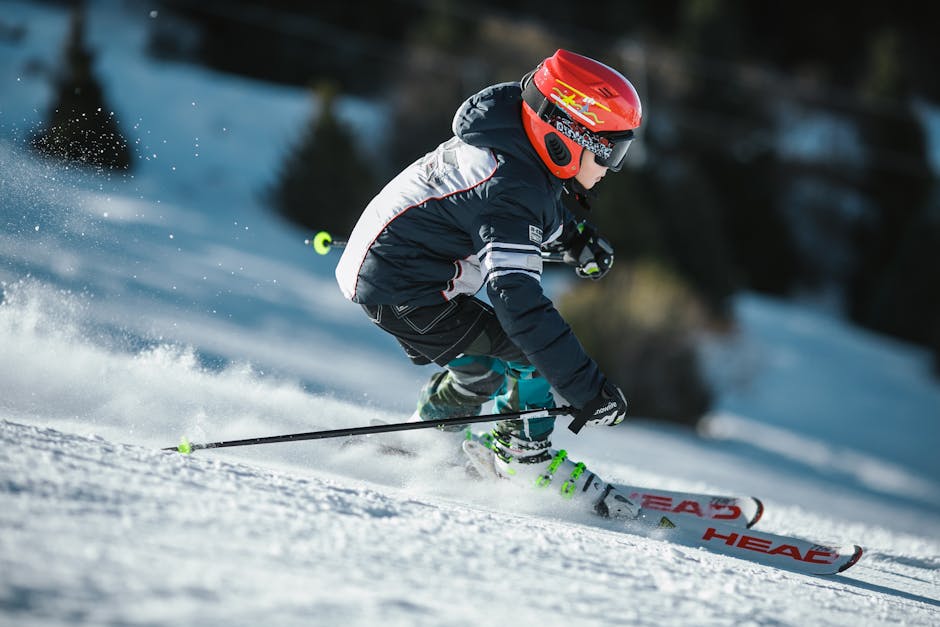Exploring the World of Winter Mountaineering Gloves
When it comes to conquering the icy terrains and challenging conditions of winter mountaineering, having the right gear is essential. Among the most crucial pieces of equipment are winter mountaineering gloves. These specialized gloves are designed to provide warmth, dexterity, and protection in extreme cold weather conditions, allowing mountaineers to maintain their grip, control, and comfort while scaling icy peaks and facing harsh elements.
In this comprehensive guide, we will delve deep into the world of winter mountaineering gloves, exploring their importance, features, types, and the factors to consider when choosing the best pair for your adventures. Whether you are a seasoned mountaineer looking to upgrade your gear or a beginner planning your first winter ascent, this article will serve as a valuable resource to help you navigate the diverse landscape of winter mountaineering gloves.
The Evolution of Winter Mountaineering Gloves
Winter mountaineering gloves have come a long way from their humble beginnings. In the early days of mountaineering, climbers often had to rely on crude, non-insulated leather gloves that provided minimal protection against the cold. As technology advanced and outdoor gear became more specialized, the design and materials used in winter mountaineering gloves evolved significantly.
Today, modern winter mountaineering gloves are engineered using advanced materials such as Gore-Tex, PrimaLoft, and Polartec, which offer superior insulation, breathability, and water-resistance. These gloves are designed to provide a balance between warmth and dexterity, allowing climbers to perform delicate tasks such as handling ropes, tying knots, and adjusting gear while keeping their hands protected from the elements.
Key Features of Winter Mountaineering Gloves
When shopping for winter mountaineering gloves, it is essential to consider the key features that differentiate them from regular gloves. Some of the crucial features to look for include:
Insulation
Insulation is perhaps the most critical aspect of winter mountaineering gloves. The insulation material used in the gloves will determine how warm and comfortable they are in cold conditions. Common insulation materials include down, synthetic fibers, and fleece, each offering a different level of warmth and moisture-wicking properties.

Waterproofing
Waterproofing is another essential feature of winter mountaineering gloves, especially when climbing in snowy or wet conditions. Gloves with a waterproof membrane such as Gore-Tex or eVent will help keep your hands dry and protected from moisture, allowing you to focus on your climb without worrying about wet hands.
Dexterity
While warmth and waterproofing are crucial, dexterity is also essential when it comes to winter mountaineering gloves. Look for gloves that offer a good balance between warmth and dexterity, allowing you to perform intricate tasks without compromising on protection.
Grip
A secure grip is vital when climbing in icy or snowy conditions. Winter mountaineering gloves should have a textured palm or grip material that provides traction and prevents slipping, allowing you to maintain control while navigating challenging terrain.
Fit
The fit of winter mountaineering gloves is crucial for comfort and performance. Gloves that are too tight can restrict movement and circulation, while gloves that are too loose may compromise dexterity and warmth. Look for gloves that fit snugly but allow for flexibility and movement.
Types of Winter Mountaineering Gloves
There are several types of winter mountaineering gloves available, each designed for specific conditions and activities. Some of the most common types include:
1. Insulated Gloves
Insulated gloves are the most basic type of winter mountaineering gloves, providing warmth and protection in cold conditions. These gloves are typically made with a combination of insulation and waterproofing materials, offering a good balance between warmth and dexterity.
2. Shell Gloves
Shell gloves are lightweight, waterproof gloves designed to be worn over a liner or insulated glove. These gloves are ideal for wet or windy conditions where protection from the elements is crucial. Shell gloves are typically less insulated than other types of gloves but offer excellent waterproofing and wind resistance.
3. Expedition Gloves
Expedition gloves are heavy-duty gloves designed for extreme cold weather conditions. These gloves are heavily insulated, waterproof, and durable, making them ideal for high-altitude climbs and harsh environments. Expedition gloves are often bulkier than other types of gloves but provide maximum warmth and protection.
4. Softshell Gloves
Softshell gloves are versatile gloves that offer a balance between warmth and breathability. These gloves are made with a stretchy, water-resistant fabric that provides some insulation while allowing for flexibility and movement. Softshell gloves are ideal for activities that require a combination of warmth and dexterity, such as ice climbing or skiing.
Choosing the Right Winter Mountaineering Gloves
When selecting winter mountaineering gloves, it is essential to consider your specific needs, preferences, and the conditions you will be facing. Here are some factors to keep in mind when choosing the right pair of gloves:
1. Temperature Rating
Consider the temperature rating of the gloves and match it to the weather conditions you will be encountering. Gloves with a lower temperature rating are suitable for extreme cold, while gloves with a higher temperature rating may be more appropriate for milder conditions.
2. Activity Level
Think about your activity level and the intensity of your climb. If you will be exerting a lot of energy and generating heat, you may want gloves with better breathability to prevent overheating. On the other hand, if you will be in stationary or low-energy situations, focus on insulation and warmth.
3. Fit and Comfort
A proper fit is essential for comfort and performance. Make sure the gloves fit snugly but allow for movement and flexibility. Consider trying on gloves with your climbing gear to ensure they work well together and do not restrict movement or interfere with your equipment.
4. Durability
Winter mountaineering gloves are subjected to harsh conditions and wear and tear. Choose gloves made with durable materials and reinforced stitching to ensure they can withstand the rigors of winter climbing.
Expert Opinions
To provide additional insight into the world of winter mountaineering gloves, we reached out to expert climbers and outdoor enthusiasts for their opinions and recommendations. Here’s what they had to say:
“When it comes to winter mountaineering gloves, I always look for a balance between warmth and dexterity. I prefer gloves with a removable liner so I can adjust the insulation based on the conditions. Waterproofing and grip are also essential for maintaining control and staying dry in challenging terrain.” – Sarah, Experienced Mountaineer
“I recommend investing in a good pair of expedition gloves if you plan on climbing in extreme cold weather. These gloves provide maximum warmth and protection, allowing you to focus on your climb without worrying about frostbite or discomfort. Look for gloves with a wrist cinch and gauntlet closure to seal out snow and wind.” – John, Alpine Climber
Common Misconceptions
Despite the importance of winter mountaineering gloves, there are some common misconceptions that surround them. Here are a few misconceptions debunked:
1. Thicker gloves are always warmer.
While it may seem logical that thicker gloves provide more warmth, this is not always the case. Thicker gloves can sometimes restrict blood flow and limit dexterity, leading to colder hands. It is essential to find gloves that offer the right balance of warmth and flexibility.
2. Waterproof gloves are always the best choice.
While waterproof gloves are essential for wet conditions, they may not be the best option for all situations. In extreme cold or dry climates, breathable gloves may be more suitable as they allow moisture to escape, preventing sweat buildup and keeping your hands dry and comfortable.
Comparative Analysis
When comparing different brands and models of winter mountaineering gloves, it is important to consider factors such as price, features, durability, and customer reviews. Conducting a comparative analysis can help you make an informed decision and choose the best gloves for your needs.
FAQs
Here are some frequently asked questions about winter mountaineering gloves:
1. Are touchscreen-compatible gloves available for winter mountaineering?
Yes, many winter mountaineering gloves are now designed with touchscreen-compatible materials on the fingertips, allowing you to use your smartphone or GPS device without removing your gloves.
2. How should I care for my winter mountaineering gloves?
To prolong the life of your gloves, it is essential to follow the manufacturer’s care instructions. Typically, this involves hand washing with mild detergent, air drying, and reapplying waterproofing treatments as needed.
Conclusion
In conclusion, winter mountaineering gloves are a critical piece of gear for climbers facing cold, harsh conditions. By understanding the key features, types, and factors to consider when choosing gloves, you can ensure that you stay warm, protected, and comfortable during your winter adventures. Whether you opt for insulated gloves, shell gloves, expedition gloves, or softshell gloves, the right pair of winter mountaineering gloves can make all the difference in your climbing experience.
As you embark on your winter mountaineering journey, remember to prioritize warmth, dexterity, grip, fit, and durability when selecting gloves. Consider expert opinions, debunk common misconceptions, conduct a comparative analysis, and refer to FAQs to make an informed decision. With the right pair of winter mountaineering gloves, you can focus on the thrill of the ascent and the beauty of the snowy landscapes, knowing that your hands are well-protected and ready for the challenges ahead.




